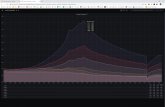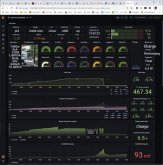KBWaldron
Solar Enthusiast
I've seen a few discussion that have had the occasional indirect reference to the gist of this question, but no definitive agreement.
As LiFePo4 batteries age, and basically just about any other battery, they lose capacity. My question for LiFePo4 batteries is how this capacity loss is reflected in the battery characteristics?
Is there simply a loss of amp hour capacity with no impact on voltage profile? Or does the maximum voltage start to drop as the battery ages? If it is the latter then it would seem that over time one would have to modify the charging configuration on the SCC to accommodate this.
I have two used BYD batteries and I want to ensure I use the correct charging configuration for these batteries. My intent was to keep them in 10-90% range in order to get the maximum number of cycles out of them.
I'd appreciate comments from those in the know or who have had experience with this.
As LiFePo4 batteries age, and basically just about any other battery, they lose capacity. My question for LiFePo4 batteries is how this capacity loss is reflected in the battery characteristics?
Is there simply a loss of amp hour capacity with no impact on voltage profile? Or does the maximum voltage start to drop as the battery ages? If it is the latter then it would seem that over time one would have to modify the charging configuration on the SCC to accommodate this.
I have two used BYD batteries and I want to ensure I use the correct charging configuration for these batteries. My intent was to keep them in 10-90% range in order to get the maximum number of cycles out of them.
I'd appreciate comments from those in the know or who have had experience with this.




